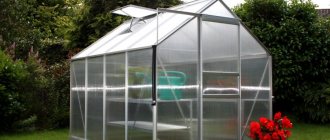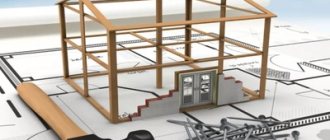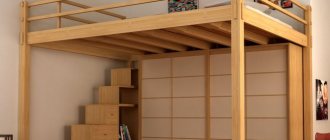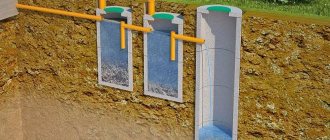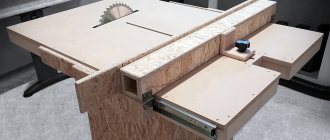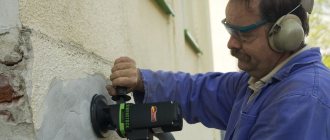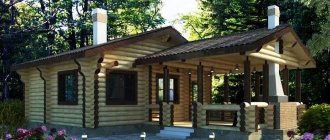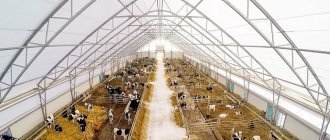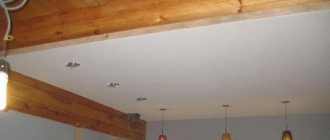Today, it is not a problem to enjoy a vegetable salad in the middle of winter: there is a rich assortment of plant products in stores all year round. But, besides the fact that the price for it is not the most affordable, and the taste leaves much to be desired, the benefits are also minimal, but it is quite possible to “enrich” the body with various chemicals. Therefore, despite the abundance in stores, winter greenhouses, which provide the opportunity to grow environmentally friendly and tasty vegetables or herbs for your family, have not lost their relevance. However, compared to summer greenhouses, winter greenhouses are more complex both in terms of construction and in terms of operation of the structure, and are more demanding in terms of materials. The participants of our portal are mainly engaged in seasonal greenhouses, but they also have experience in the construction and use of year-round greenhouses.
Consider:
- Structural features of winter greenhouses.
- Arrangement of winter greenhouses.
- What to grow in winter.
Features of installation of warm greenhouses
Depending on the purpose of the greenhouse, the method of its heating, the level of illumination and other technical characteristics are selected. Winter greenhouse structures are buildings on a foundation that can withstand strong gusts of wind and snow loads.
First, you need to decide on the place where the winter greenhouse with heating will be installed with your own hands. It could be a hillock or a hill. If the terrain is flat, then it is advisable to create an earthen embankment. This method contributes to additional heating of the greenhouse building due to the sun.
It is advisable to allocate an area for a vestibule within the building area. It will create a transition zone and cold air will not penetrate to the planted plants.
Material selection
When building a winter greenhouse with your own hands, you must take into account that the best material for its frame will be wood or metal . The bars are selected with a cross-section that can withstand snow and wind loads.
The best microclimate in the building will be provided by wood, and wooden blocks are more convenient to work with. At the same time, the metal frame will last longer.
To cover a winter greenhouse you can choose:
- Polycarbonate. This is a durable and lightweight material that has good light transmission and relatively low cost. That is why it is very popular among gardeners.
- Glass. The glazing will have a significant weight that the frame must support.
- Film. A cheap but short-lived material that is mainly suitable for greenhouses and summer greenhouses.
Construction of industrial greenhouses on a farm
The right material will help you build a winter greenhouse with your own hands that will last a long time.
Foundation
The greenhouse building has a heavy structure and requires laying a foundation for strength. There are 4 ways to base it:
- tape;
- brick;
- squared;
- stone foundation.
Practice shows that the most common is a strip foundation.
Work order:
- Construction site marking;
- digging a ditch about a meter deep;
- covering the bottom of the pit with waterproofing;
- production of reinforcement to strengthen the foundation;
- filling the ditch with cement mortar;
- coating of thermal insulation material on a completely hardened foundation.
Next, bolts are attached to the prepared foundation to construct the frame. When deciding how to build a winter greenhouse, some craftsmen lay one layer of brick on the foundation. With this method, the bolts must pass through the brickwork and penetrate the fabricated foundation.
Characteristics of different films
When deciding how to cover a greenhouse, it is important to determine what functions it will perform: in winter, to protect plantings from frost, or in warmer times of the year, to help seedlings ripen faster and bear fruit. Clearly defined goals help you choose the right coating material.
Polyethylene film is suitable for covering greenhouses used in the warm season. It is removed for the winter, the frame is disassembled and reinstalled in the spring. For such events, roll material with a thickness of 150-200 microns is most suitable.
Marking of polyethylene film Source fishing-caravan.ru
Reinforced film is ideal for those who want to install a greenhouse once and then use it for three years without disassembling or removing the shelter for the winter. The density of this material is 150–200 g/m².
PVC film is a good choice for winter greenhouses. They help grow plants even at -15 degrees below zero. During the day, the material does not let the sun's rays through; at night, the film retains heat well.
Frost-resistant film is used to create industrial greenhouses. It can last more than seven years and does not stretch during its entire service life. Easily withstands hail and is not damaged.
Amateur gardeners, studying the offered assortment, often wonder what is the best way to cover a greenhouse. Experts advise using the first three types of film. They are inexpensive and can be used to quickly cover a greenhouse for growing a small volume of garden crops.
Frame
For the construction of the frame, pipes, angles and metal profiles are mainly used.
Stages of work:
- Fastening the bottom lining to the manufactured foundation with anchor bolts;
- installation of vertical supports on the lining using fasteners or a welding machine;
- joining vertical posts with a horizontal support at the top;
- installation of the frame under the roof.
To increase the strength of the created structure, the profiles are joined with stiffeners. Next, the finished frame is sheathed with polycarbonate.
The strength of the greenhouse structure as a whole depends on the proper design of the frame. Therefore, it is installed based on plans and calculations prepared in advance.
Film fastening elements
When cutting the film, its initial fastening is done using tape. You cannot leave the greenhouse like this: the first strong gust of wind will tear the covering. The correct choice of fastening type will help prevent this. It depends on what type of frame is used to create the shelter.
Clamps for film on a greenhouse Source semopt.ru
Types of winter greenhouses
Depending on the frame material, the shape of the greenhouse is selected. They can be arched, single-pitched or gable-shaped. Arched types are usually used for a metal frame.
This is due to the fact that it is problematic to make an arched greenhouse from a wooden frame. It will take a lot of effort and time. But for wooden structures, single-slope and gable types of greenhouses are acceptable.
Application of polycarbonate to the base
The material is adjusted to the dimensions of the base. Cut into sheets and bolted to the frame, starting from the bottom of the structure. Laying occurs without gaps or overlapping of sheets on top of each other.
From the inside of the structure, the joints of the sheets are treated with sealants to protect against the penetration of moisture from the external environment.
Sheathing
The era of multilayer PVC film is becoming a thing of the past and has been replaced by polycarbonate, from which the best winter greenhouses are made. The material has many advantages:
- Aesthetic appearance;
- resistance to external damage;
- ease of processing and installation of sheets;
- a light weight;
- polycarbonate can withstand increased loads;
- does not deform under the influence of ultraviolet rays.
The listed characteristics make polycarbonate an excellent material when deciding how to make a winter greenhouse. It ideally protects plantings from precipitation in the form of rain and snow. Helps maintain the desired microclimate. The photo of a winter greenhouse shows a version of a polycarbonate greenhouse.
Glass also continues to be used as cladding. It is inferior to a winter greenhouse made of polycarbonate in terms of thermal conductivity, but with careful handling it wins in terms of long service life and light transmission.
In regions with cold climates, the best option is a greenhouse - a thermos. Its essence lies in double sheet cladding like a double-glazed window. The characteristics of the outer layer are 6 mm, and the inner layer is 4 mm.
Device principle
The protective shelter, which is created using a frame and film, is used only for growing seeds and seedlings of garden crops. It absorbs the sun's rays and converts them into thermal energy. Inside the greenhouse it is always several degrees warmer than outside, even without additional heating. Its installation helps to create a microclimate favorable for the growth of garden crops. The shelter reliably protects crops from precipitation, strong winds, and prevents the penetration of insects that can harm seedlings or adult plants.
In order for the greenhouse to work efficiently, during its installation it is necessary to correctly calculate the amount of covering material. To do this, you need to make calculations and take correct measurements. It is easier to solve the problems when the length of the frame and the width of the covering material are known.
The calculation requires the length of the greenhouse and the width of the film Source greentalk.ru
See also: Catalog of country house projects
If the structure of the greenhouse is arched, the length of the canvas should be equal to the length of the arc. When the greenhouse has a frame with a “pitched roof”, the film is calculated taking into account the height of the walls and the length of the slopes. The resulting figure should be equal to the length of the film. To find out how many of these pieces are needed to completely cover the shelter, you need to divide the length of the greenhouse by the width of the film. Since individual pieces are then overlapped, it is important to add 25 cm to the width of each piece (for allowances).
In order for the greenhouse coating to ensure the performance of its functions, it is important to pay attention to the following nuances:
- It is better to cut the covering material on site. It will be much easier to do this if you lay the roll next to the frame in width, and then throw it across the structure, stretch it well on both sides, add 25 cm to the right and left for allowances, and only then cut off the first piece.
- The second strip is cut in the same way. It is laid over the first one with an overlap (25 cm) and secured with construction tape.
- As many pieces are cut as needed to cover the greenhouse from start to finish.
- The ends are cut in the same way and also with allowances of 25 cm.
- Doors and windows are cut out after installing and attaching the film.
Film strips are laid overlapping Source 9dach.ru
Note! It is better to cut the film in calm weather; if the covering material sways and bends under gusts of wind, it will not be possible to stretch it properly.
Knowing how to cover a greenhouse with film, it is not difficult to calculate the amount of covering material. But when buying it, it is important to look at the form in which it is sold. Polyethylene film has a standard width. It is equal to 150 cm. But some manufacturers sell rolls in the form of a sleeve. Before covering the greenhouse, it will have to be cut along one edge of the bend and unfolded.
See also: Catalog of companies that specialize in the installation of metal structures
Heating
With a variety of methods and fuel used, there are several heating options:
Air - heated air moves through different level air ducts or is heated by a stove installed in the house. It is one of the most budget-friendly options for heating a winter greenhouse. A significant disadvantage of this option is manual control. Accordingly, according to safety regulations, it is impossible to leave such a greenhouse without control.
Contour - an electrothermal circuit is mounted along the edges, a radiator and pipes are used.
Subsoil - suitable for use in regions with warm climates. Water floor tubes or special electrical cables used for subsurface heating are laid directly in the ground.
Combined - a combination of infrared lamps for greenhouse conditions on top and polypropylene tubes filled with coolant located in the soil. The overall operation of the two elements of the system contributes to uniform heating of the air in the lower part of the greenhouse and in its upper part. This heating system is equipped with microclimate control sensors in a heated winter greenhouse.
DIY construction
The structure should be erected on a flat area that is well lit and protected from winds.
The foundation for a winter greenhouse must retain heat in any frost and be durable.
Stages of foundation construction:
- Along the perimeter of the future structure, dig a trench with a depth of at least 80 cm and a width of at least 20 cm. The depth of the trench depends on the degree of freezing of the soil, so in Siberia and the northern regions it should be much greater.
- The bottom of the trench is covered with a 15 cm layer of sand, which must be compacted well.
- The sand is covered with waterproofing, the formwork is assembled and concrete is poured.
- The structure is strengthened with iron reinforcement.
A foundation rising several tens of centimeters above the ground surface will make it possible to make high beds, which will greatly facilitate work in the greenhouse.
Frame installation
The construction of the structure should be started only after the foundation has stood well and dried.
Stages of work:
- First of all, you need to make the lower trim, then install the vertical posts and make the top trim. Both strappings are made of timber. It is recommended to coat wooden elements that will come into contact with the ground with an antiseptic.
- According to the project and drawings, the roof frame is built.
- To erect a roof on a large greenhouse, you need to make several supporting posts.
- Using self-tapping screws and rubber washers, polycarbonate sheets are attached to the structure.
- The edges of the covering material are sealed with tape. So that cold air does not enter the greenhouse through the cracks.
- It is recommended to make several windows or vents in polycarbonate sheets, with the help of which the greenhouse will be ventilated in warm weather. Windows must close tightly and be easy to open.
Heating system
When installing a winter greenhouse, it is necessary to make a heating system , which can have several options:
- Furnace installation. Cheaply and easily, you can install a wood-burning stove in a greenhouse with your own hands, which will heat the air. The disadvantage of such heating is that you have to regulate the temperature yourself by reducing or increasing the amount of fuel. However, a wood stove can be made from scrap materials, such as old barrels.
- Warm beds. Additionally, you can insulate the soil using organic debris in the form of branches, tops, and leaves. Large debris is first placed under the beds, followed by small debris. Fertile soil is poured on top in a layer of 10 cm. During the rotting process, heat will be released and warm the soil.
- Laying pipes in the ground. You can run pipes from a central or other heating source and lay them in the ground, which they will heat. All pipes are installed in one system, in which water can also be heated using electricity.
- Greenhouse similar to a thermos. To save energy costs, the building can be covered with two layers of polycarbonate, and the walls can be buried to the frost line. In such a greenhouse the air temperature will be positive even in severe frosts.
- Combined automated heating. In this case, the ground is heated by polypropylene pipes laid in it, and the air is heated by infrared lamps installed on top. By connecting a thermostat to such a system, temperature control will be carried out automatically. Combined heating can be equipped with a ventilation system that will turn on when it gets hot in the greenhouse. This heating system is sold in stores, but it is quite expensive.
Do-it-yourself automation for greenhouses
When arranging a winter structure for growing vegetables, one should not forget about additional lighting, for which you can use various types of lamps.
Lighting and Humidity
For full development, plants require additional lighting. The level of lighting depends on the crops planted in the greenhouse. In particular, greens and young seedlings require less light, unlike berry crops.
For lighting, sodium lamps are installed that imitate the sun's rays. Lamps are mounted above beds or boxes with seedlings. You can also hang regular fluorescent lamps. But in terms of efficiency they are much inferior to sodium lamps.
It is important to equip electrical wiring with moisture protection.
Regular watering eliminates the need for additional air humidity. To avoid excessive humidity, create a forced exhaust or ventilate the greenhouse through the vents on the roof. Irrigation is organized using warm underground water supply or using storage tanks.
To build a winter greenhouse you will not need to spend a lot on building materials. As a result, it will last for many years and will be an excellent help in the garden, and fresh fruits and vegetables grown yourself will create a good mood.
Types of buildings
Before you start designing a winter greenhouse, you should consider the types of its classification:
- By location: wall-mounted (house-side) or detached building.
- Relative to the ground: on the surface or deep into the ground, on the platform (roof) of any structure.
- By building material: frame, wood, brick, with a film coating of glass or polycarbonate.
- According to the architectural principle: horizontal, arched, single-, double- or triple-sloped, combined.
- According to the method of growing plants: containers, racks, beds or anything else.
- By type of heating: biofuel, technical heating (stove, water, electric) or solar panels.
Photo of a winter greenhouse
Rail fastening
Not everyone knows how to attach film to greenhouse arches made of wood. The method of fixing rolled material is actually extremely simple:
- small wooden blocks 10 cm long are cut;
- processed with sandpaper;
- then wrapped in several layers of polyethylene film;
- the first layer, the one that will come into contact with the frame of the greenhouse, is coated with rubber glue;
- The block is applied to the fastening point, and then fixed with a self-tapping screw for reliability.
Attaching the film to a wooden frame with slats Source fishing-caravan.ru
The presence of glue under the attachment point ensures a tight connection, which extends the service life of the shelter. When wooden slats are not available, pieces of old linoleum or plastic tape, which is used for packing boxes, can replace them. It is attached to the wooden frame using a construction stapler.
If you need to decide how to attach the film to a metal greenhouse frame made from a profile, you should use the following advice. It is better to fix the covering material with wooden blocks, but they should be fastened with self-tapping screws not to the frame arc itself, but to the ends of the greenhouse, to its metal posts. When the frame of the greenhouse is assembled from reinforcement rods, the easiest way is to attach the film to it with office clothespins (these are used to fasten sheets in a folder).
Briefly about the main thing
By understanding how and what to cover a greenhouse with, you can create shelters that can last in the garden for several years. Experts advise cutting it out right away and keeping a spare case on hand. It will help, in case of damage to the film, to replace it in time and prevent the death of plants. The method of fastening the covering material is selected taking into account what the frame is made of.
A little more attention!
What do you think - which method of attaching film to a greenhouse is more reliable? Maybe it is better to use polycarbonate or glass to cover the greenhouse?
